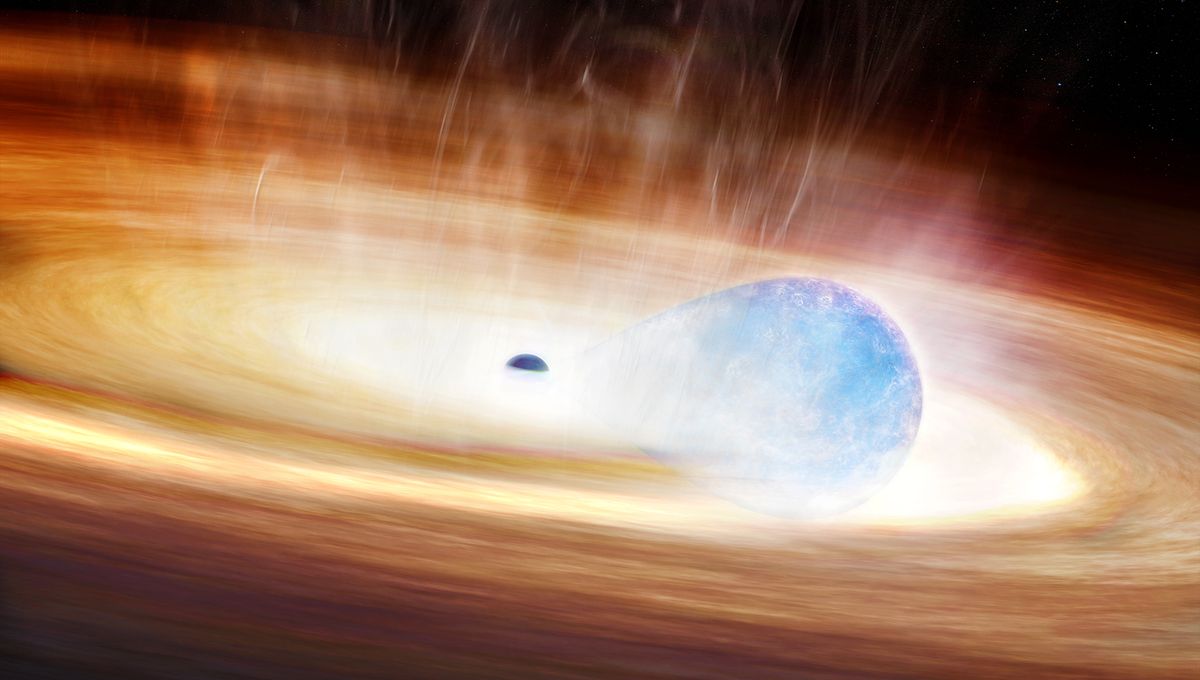
If you ever wondered what would happen if you were to throw a black hole at a star, well astronomers now have an answer: it goes “boom” in a truly distinctive way. Researchers have spotted an interesting supernova event that had never-before-seen behavior. A study revealed the involvement of a black hole and its interaction with a massive old star, leading to the catastrophic and very bright demise.
The event was discovered by the Zwicky Transient Facility in July 2023 and given the name SN 2023zkd. It was flagged by a new artificial intelligence algorithm right after the event, which allowed for telescopes in space and on the ground to quickly and consistently follow up on the explosion.
Supernovae tend to have a bright initial peak and then fade over the course of months as the material exploded from the star expands and cools down. SN 2023zkd had that first peak, but surprisingly, after several months, it brightened again. This set astronomers on a path that considers a black hole’s involvement.
In the more likely scenario, a star over 30 times the mass of our Sun was orbiting a stellar-size black hole. In the year before the explosion, the two became closer and closer, until the large star engulfed the black hole. The black hole’s incredible gravitational pull caused the star so much stress that caused a supernova.
Alternatively, the black hole did most of the work, ripping the star apart before getting inside, and it is this plasma swirling around the black hole that exploded into a supernova. The result is the same, and an even bigger black hole.
“Our analysis shows that the blast was sparked by a catastrophic encounter with a black hole companion, and is the strongest evidence to date that such close interactions can actually detonate a star,” lead author Alexander Gagliano, from the Institute for Artificial Intelligence and Fundamental Interactions, said in a statement seen by IFLScience.
“Our machine learning system flagged SN 2023zkd months before its most unusual behavior, which gave us ample time to secure the critical observations needed to unravel this extraordinary explosion.”
The unusual post-explosion behavior led researchers to look at archival observations pre-supernova. They were able to find something that added to the puzzle. For more than four years before the explosion, the object had been brightening. The process likely led the star to release material, creating two shells of material of different densities: a thinner one near the system and a thicker one farther away.
Following the supernova explosion, the thinner material was ignited. Months later, the explosion shell from the supernova reached the thicker layer of material, igniting it, causing the second peak of activity. In the years before the supernova explosion, the black hole was clearly putting the star under incredible gravitational stress.
“2023zkd shows some of the clearest signs we’ve seen of a massive star interacting with a companion in the years before explosion,” added V. Ashley Villar, a CfA assistant professor of astronomy in the Harvard Faculty of Arts and Sciences and a co-author on the study.
The coming online of observatories like the Vera Rubin, which could find even more supernovae than the current facilities, shows the need for these specific artificial intelligence algorithms to parse the data for the most intriguing findings.
“We’re now entering an era where we can automatically catch these rare events as they happen, not just after the fact,” said Gagliano. “That means we can finally start connecting the dots between how a star lives and how it dies, and that’s incredibly exciting.”
The event took place in a galaxy located about 730 million light-years from Earth.
The study is published in The Astrophysical Journal and a preprint is available on the arXiv.
Source Link: A Black Hole Hitting A Star Created A Never-Before-Seen Type Of Supernova